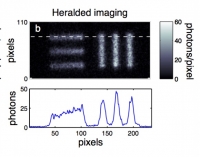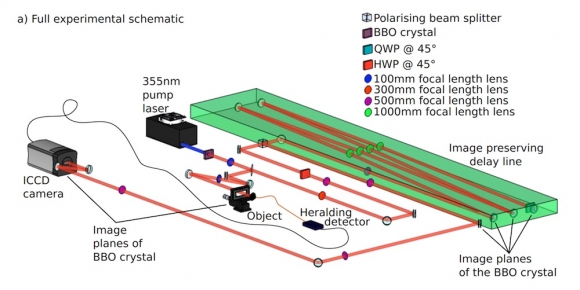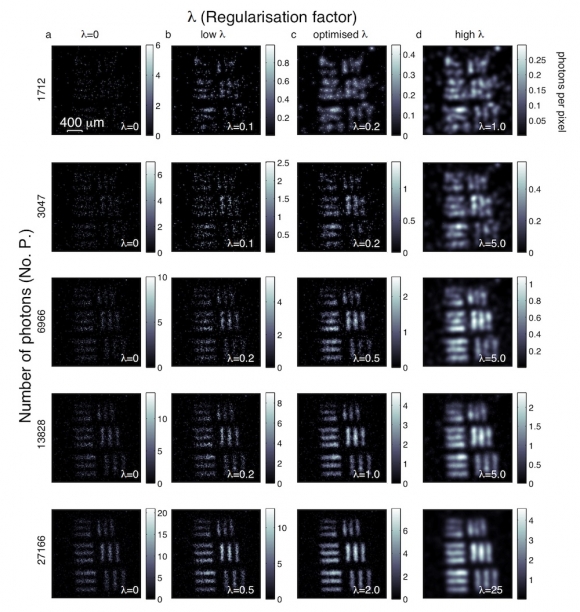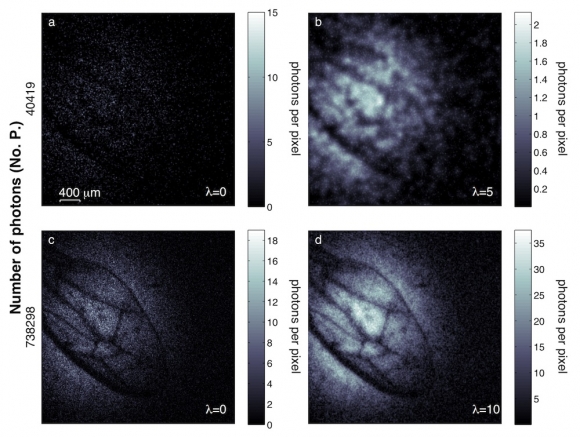ISO 512,000 is so 2014—photography in almost total darkness could soon be possible
posted Thursday, September 4, 2014 at 3:20 PM EST

A little while ago, a new king of low light photography was born when the Sony A7S was announced. Thanks to its 35mm full-frame sensor with a reduced resolution of only 12 megapixels, the Sony A7S is able to make the dark of the night look like broad daylight. We're not kidding you -- take a look at the sample video in this article.
But alas, the A7S could soon be obsolete. At the University of Glasgow, Scotland, researchers are currently working on a method to create photographs with almost no light around. But how much light is almost no light? Or rather, how much light do you really need to be able to get something that resembles a photograph?
In a normal camera such as the Sony A7S, you need several thousands -- if not tens of thousands -- of photons per pixel to achieve what would be considered a proper exposure. Of course, we know that the sensor signal can be boosted if there's not enough light around, and the A7S is especially good at making the most use of the least light.
Now what if we told you that it's possible to create an image from less than a single photon per pixel? You'd probably say that's impossible, and we thought so, too. But apparently, the research team headed by Peter Morris from the University of Glasgow have managed just that. But don't get your hopes hight just yet -- the technology isn't anywhere close to being fit for consumer devices.

While the research team uses a (more or less) regular CCD device to pick up the photons, everything else is far from regular imaging technology. For one, the setup makes use of what is known as quantum entanglement, which allows it to form an image from photons that have never actually interacted with the object that is being photographed.
This is possible because -- at a very basic and simplified level -- these photons are part of a pair of entangled photons that have the same properties. So when one of the two interacts with an object and changes its properties, the second one, which is being picked up by the imager, behaves in the exact same way. This is called heralded imaging.
The other trick that the research team makes use of is called compressed sensing, which is what makes it possible to form images from less than a single photon per pixel. By interpolating the limited information picked up by the sensor with a special algorithm, they are able to create a full image from less photons than there are photosites on the pickup device.
For example, when photographing a crop from a resolution chart, the team was able to form a full image from less than 7,000 individual photons. In another test, the team needed about 40,000 photons to form an image of a wasp's wing on a 300x300 pixel imager -- that amounts to less than half a photon per pixel, statistically.


That's quite impressive, and gives a totally new meaning to the term "available light photography" -- though in this case, "available darkness photography" would probably be much more fitting. We have our doubts though that we'll see such low light capabilities in consumer devices any time soon.
If you'd like to delve deeper into the details of the research project, you can find the paper over at arxiv.org.
(via Medium)